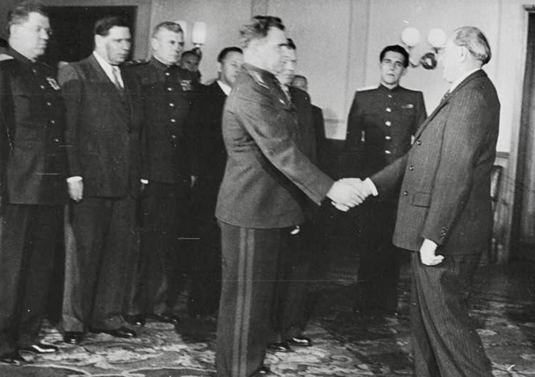Complexity Theory and the Synergy of Sturm Groups
- Maria A. Kithcart

- Nov 30, 2023
- 2 min read

Pictured: Lieutenant-General V.I. Chuikov at an observation post in Stalingrad, 1942. Photo by Georgy Zemla.
In today’s global business environment, organizations must function as leanly as possible to eliminate waste, improve performance, and adapt to change constantly. Lean structures are typically decentralized, allowing greater initiative and decision-making power with employees, especially those interacting directly with the public.
Developing such a flexible organizational structure is not a recent occurrence—historical anecdotes from Marshal Chuikov’s memoirs as well as research conducted on his leadership practices demonstrate the effectiveness of such tactics. Allowing greater flexibility aligns well with Complexity Theory, which describes how employees are encouraged to apply “innovative thinking and real-time responses to change by allowing business units to self-organize.” In review of Chuikov’s practice of tactical warfare in Stalingrad, Eyal Weizman shared an assessment in his journal article titled “Lethal Theory”:
“Unable to control the pockets of Red Army resistance scattered through Stalingrad, Vasily Ivanovich Chuikov gave up centralized control of his army. The result was later analyzed as a form of ‘emergent behavior,’ where the interaction between the independent units created a so-called ‘complex adaptive system,’ rendering the total effect of military action greater than the sum of its parts.”
Joshua Render addresses the issue of decentralization this way:
“At no point should that centralized system completely go away, but it could be better served to provide a focus for the organization and let the people outside the structure worry more about organizing themselves. The structure could become leaner and make the organization flatter; reducing costs and improving quality.”
In reflection of Weizman’s observations regarding Chuikov giving up centralized control, I concur with Render’s comments and think Vasily Ivanovich instead simply allowed greater flexibility in the military structure. Chuikov was still very much in command of his soldiers, make no mistake. However, the need for a certain level of flexibility came from the fact that lines of communication between the 62nd Army headquarters and the various division commanders were often disrupted due to constant bombing attacks by the Germans. Also, the massive destruction of the city itself meant that smaller mobile “sturm groups” were more effective in urban combat. These highly mobile soldiers had to take individual initiative and act independently, giving rise to Chuikov’s maxim that “in street fighting, every soldier is on occasion his own general.”
However, I certainly concur with Weizman’s remarks regarding the synergistic output of a complex adaptive system. By constantly counterattacking, Chuikov’s 62nd Army was able to keep the Germans off balance and compensate for the smaller numbers of Red Army fighters. In closing, Major Dale Smith explored Vasily Ivanovich’s maneuvers in his master’s thesis and shared the following:
“Chuikov believed that an active defense was essential to his success and coined the phrase, ‘constant, close, and combined operation’ to describe his tactic in the defense of Stalingrad. Chuikov’s ‘hyperactive’ defense was a constant series of attacks so as to prevent the Germans from consolidating gains.”



